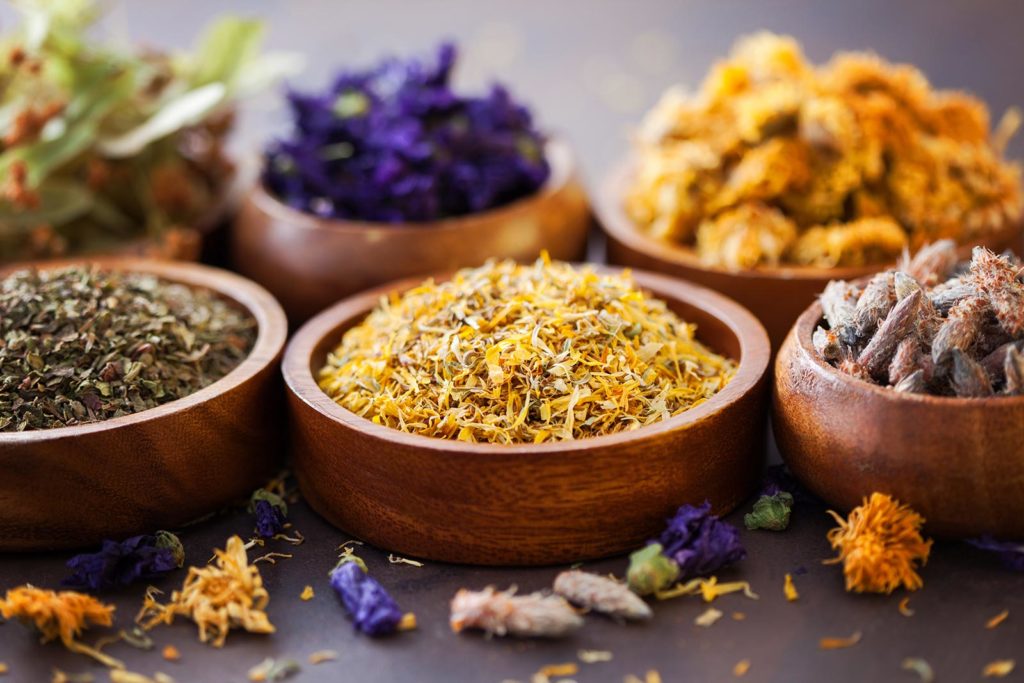Harvesting Cistus Ladanifer

How, when and where do we harvest the plant?
Like with many other plants, Cistus Ladanifer (rockrose) should be harvested in the morning. This helps to ensure that the biochemical constituents of the leaves and small branches keep their properties. The ideal time is anywhere between when the dew from the previous night has evaporated and before it becomes too hot to work.
Our cistus harvest starts early in the morning with a short drive to a field on the rural outskirts of Aljezur. The tools needed to harvest Cistus Ladanifer are quite simple, encompassing only a sickle and a pair of gloves. With one hand we hold the leaves and twigs and with the other, we do the cutting. Due to the resin in the plant, it doesn’t take long before our gloves turn black and the sickle starts accumulating a dark gum. This is natural Labdanum and it has a wonderful scent. Labdanum collected this way is also free of any chemicals.
What type of plants do we look for when it comes to harvest time?
The Cistus Ladanifer shrubs we harvest are usually relatively short, between 40 centimetres and 1 metre in height. As a rule of thumb, the younger the plants, the shorter they are.
As the younger plants (2 to 3 years) also produce more fresh leaves and resin, it is preferable to harvest the younger plants. This means that harvesting involves a lot of back bending and effort. Combine this work with the sweltering summer heat, rough terrain and insects (bees, wasps and gadflies) and it’s easy to see why harvesting Cistus Ladanifer is considered to be a labour intensive pursuit.
How much oil can we extract from a single Cistus Ladanifer plant?
The problem with Cistus Ladanifer essential oil is that in order to produce a single litre of it, one needs between 1,000 and 2,000 kilograms of fresh plant material depending on the time of year. This means that the yield for steam distilling Cistus Ladanifer essential oil is very low (around 0,1%). Unfortunately, due to the nature of the terrain and the characteristics of the plant, a mechanised harvest is not possible. We also ensure we undertake any harvesting in a sustainable manner by rotating the fields and never completely stripping a plant, even though the plant is in no danger of becoming endangered. This way we can keep plants turning over and producing new leaves year after year. Taking this all into account, the price of many Cistus Ladanifer products appear adequately justified.
How can one go about harvesting Cistus Ladanifer?
If you should ever harvest Cistus Ladanifer on your own, you should note that due to the deadly wildfires in 2017, the Portuguese government has increased its efforts in promoting and controlling proper management of the forests and rural areas. As such, many landowners have since cleared their lands, which means they’ve also cleared a lot of Cistus Ladanifer plants. If you still want to set about finding Cistus Ladanifer plants to harvest on your own, one of the most common ways to do so is to cut Cistus Ladanifer shrubs is using brush cutters. The downside to this method is that it leaves the root intact and in the ground. From this root spring the sharp remains of the Cistus Ladanifer trunk, so it’s imperative you always wear shoes with a thick and resistant sole to mitigate the risk of serious injury.
